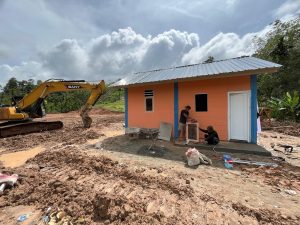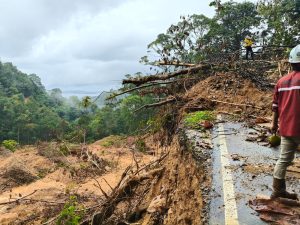Jakarta—A recent study by the Institute for Essential Services Reform (IESR) revealed that Indonesia has 3,686 GW of renewable energy potential that can be used to drive a low-emission economy through the development of green hydrogen. IESR Executive Director Fabby Tumiwa said that optimising this potential is crucial to achieving the net-zero emission (NZE) target by 2060 or even sooner.
“Our technical potential is huge, but its utilisation is far from optimal. By developing green hydrogen from renewable energy sources, we can reduce dependence on fossil fuels and pave the way for cleaner economic growth,” Fabby said in a written statement, Thursday, 27 March.
Fabby highlighted that one of the main obstacles is the high cost of producing green hydrogen, which currently ranges from USD 3.8 to USD 12 per kilogram-about four times more expensive than hydrogen produced from natural gas.
“To make green hydrogen a mainstream option, we need to lower the production cost to below USD 2 per kilogram in the next five years through improved technological efficiency, particularly electrolysis,” he added.
In a discussion forum of the Indonesian Green Hydrogen Community (KH2I) with the theme “Realising a Green Hydrogen Ecosystem in Indonesia”, Fabby revealed that the current demand for hydrogen mostly comes from the chemical and steel industry sectors. However, along with efforts to reduce emissions to maintain the earth’s temperature at 1.5°C, the market potential will expand to the aviation, power generation, and land transport sectors. Based on Deloitte data, the hydrogen export market in Southeast Asia is expected to reach USD 51 billion by 2030, USD 79 billion by 2040, and USD 141 billion by 2050.
Erina Mursanti, GETI Project Manager, also emphasised that forming the Indonesian Green Hydrogen Community (KH2I) is a strategic step to gather experts and industry players to accelerate the adoption and innovation of green hydrogen technology in Indonesia. “KH2I will play an important role in strengthening policies and providing a communication platform for stakeholders to drive the energy transition,” said Erina.
The IESR study is expected to serve as a strategic foundation for the government in formulating renewable energy development targets and policies. With the support of global investment and technological advancements, green hydrogen is believed to be able to transform renewable energy potential into a catalyst for sustainable, low-emission economic growth in Indonesia. (Hartatik)
Banner photo: shutterstock














